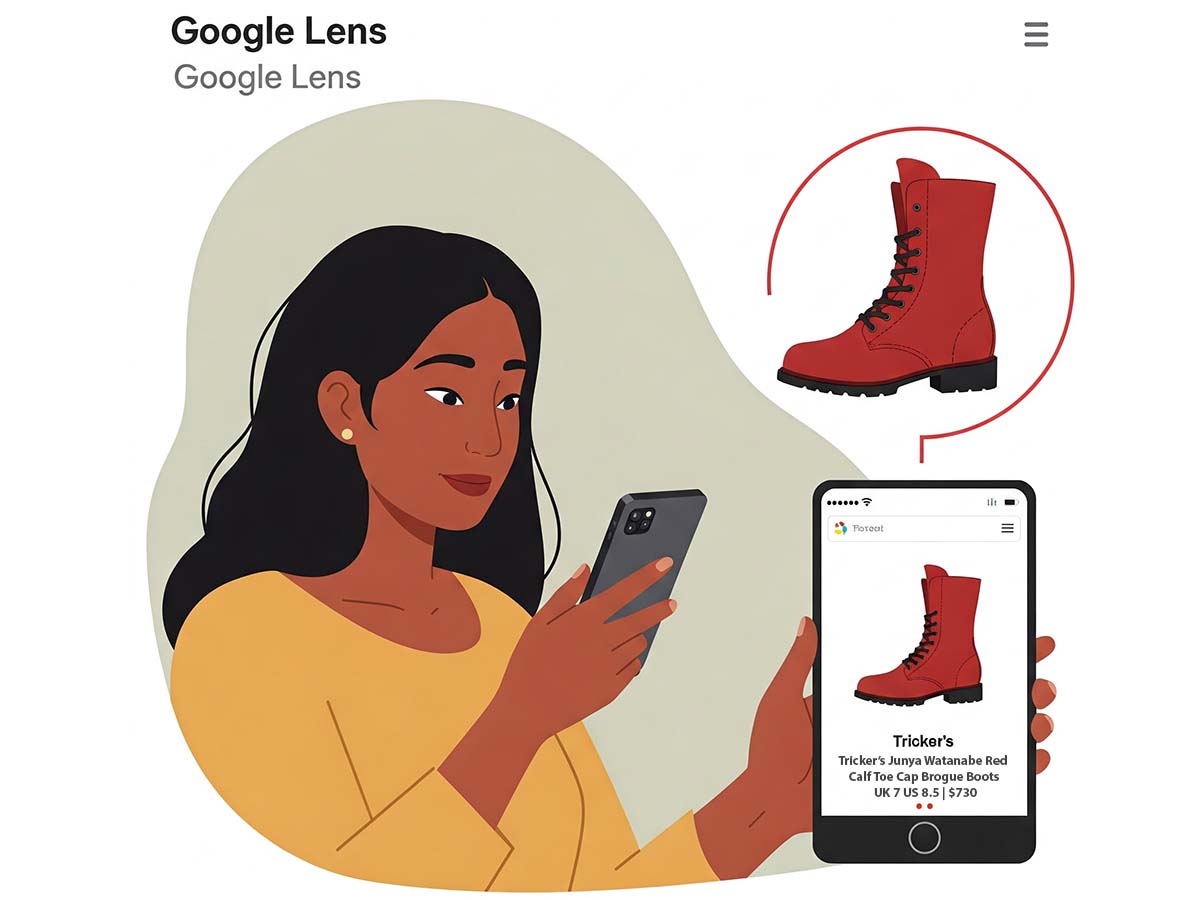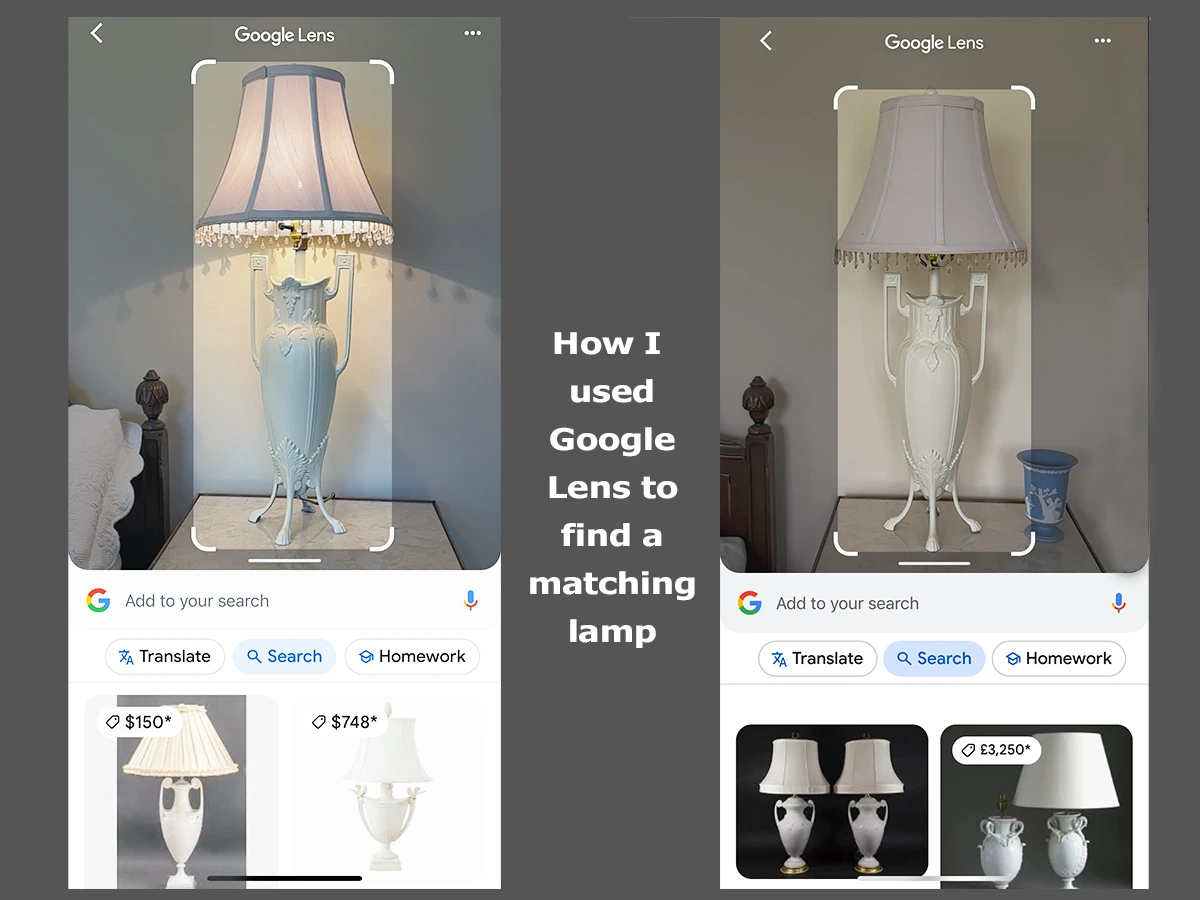Multisearch With AI Generated Answers: A Broader Scope
The future of search marketing is clear; businesses should diversify their search strategy beyond Google
Multisearch can mean getting past a singular focus on optimizing for Google Search. We’re at a significant time of pivot with a new digital landscape, ignited by new AI technology in combination with government regulations putting pressure on Google’s monopoly.
This article will answer how digital marketers, content creation mangers, and SEO professionals can prepare for the future of search. It covers connecting with your target audience more effectively and capitalize on the growing influence of visual search in shaping online discovery and click conversions in AI search that lead to purchasing decisions.
It requires updates to your content marketing strategy, tracking and measurement, as well as monitoring your agility to engage practical methods to increase conversions.
What is Google Multisearch?
Multisearch is an enhanced Google search feature that was introduced in April 2022. It utilizes artificial intelligence (AI) to help users find whatever they are searching for.
The intent is to answer the user’s question without the need to navigate your way through multiple results and sources. Rather, this form of AI Generated Answers has already vetted and surfaced what Google believes are the best related responses that match your query.
Being featured when Google AI Overview answers is one thing; gaining consistent URL placements within them – that people engage with matters more. Lens and Circle have become a powerful aspect of Google image search. I’m taking the concept of “multisearch” to a broader approach to marketing in general.
Based on data, your winning efforts can scale you forward. Efficient marketing research to determine your traffic potential of the best AI Answers may leverage NotebookLM or another Generative AI tool. It will take a savvy human to look at the data to determine accuracy, usefulness, and which insights to implement.
The introduction of Multisearch underscores the concept that SEO is an ongoing process that requires adaptation to changing user behaviors and search technologies. Staying informed about new features, testing different optimization techniques, and monitoring search performance are crucial for maintaining visibility and relevance in the evolving search landscape.
How Gen AI-Powered Multisearch Works
Anyone can now use their camera to point at an object, ask questions about it, and receive AI-generated answers. You have two major ways to tap into a web of knowledge — including many web pages in Google’s index — but they display results in a different format.
Ways to use Google Multisearch
- Lens: Lens takes users a step further. You can ask questions about the image you’re searching for and obtain AI generated answers from multiple sources. Google includes a button in some local panels and Google Business Profiles, that says “Search Products With Camera.” You can use it to “search your screen.” Google Lens makes it happen. The image-based, AI-powered Google search tool lets people use Google search using image uploads and links or from a camera app.
- Circle to Search: It’s quick and easy to search without switching apps by circling an image, text, or video. Bingo! You get quick answers using AI. And it works for users who don’t even think of “AI”!
Rapid adoption of Google Lens
Lens is used for nearly 20 billion visual searches every month, and 20% of those searches are shopping-focused,” according to New ways to holiday shop with Google Lens, Maps and more. In the November 9, 2024 article, Lilian Rincon, Vice President of Google Product Management, shares how shoppers can quickly snap a photo to find product information, similar products in-stock, whether a store’s price is competitive, and related reviews.
For local businesses, we find great success with Google’s Multisearch “near me” queries. Multisearch, particularly the “near me” aspect, has significant implications for local business findability. By empowering users to search for products or services visually and then refine their search based on proximity, Multisearch bridges the gap between online discovery and offline action. It can help cover your gaps in your question answering content.
Practical example:
Google multisearch can assist you by removing irrelevant results and providing more precise results. For example, if you want to buy an antique table lamp to match your interior decor, you can upload a photo of one you already have or like and type ‘antique table lamp’ into the search box, along with preferred colors and other dimensions. The screen will show the best matching combination as well as information such as price, brand, where to buy it, and so on.
User-Focused Applications for Healthcare Businesses
Below are tips on how to leverage multisearch effectively for a healthcare site to leverage AI answers:
- Symptom Visualization: Users can upload images of skin conditions, rashes, visual injuries, etc., and supplement with a text comments of the symptoms. It triggers a more detailed search compared to a text-only description of a medical condition.
- Medication Identification: Let people upload a picture of a prescription capsule and add keywords like use, color or shape. This is beneficial to quickly identify unknown medications, a helpful feature for both patients and medical professionals.
- Visual Anatomy Guides: Healthcare entities can integrate multisearch into detailed anatomical charts. A patient could take a picture of a body part and add text specifying their question like “pain” or “impact,” providing contextual details within the search.
- Medical Equipment Search: Users can search for medical equipment (casts, oral appliances, hearing or mobility aids) using an image along with descriptive terms for faster, more focused product searches.
- Web Accessibility: Multisearch offers alternative forms of content engagement. People with visual impairments or difficulties describing medical issues textually find multisearch and access information much easier via a visually-led search.
The work involved can quickly pay off by improving B2B lead generation and direct to consumer conversions.
Many who are new to this marketing approach find it confusing to grasp new marketing phrases. I’ll explain a few that I use and summarize what they mean. While multisearch is a feature within Google Search, the other three terms – multichannel, multitouch, and omnichannel – are marketing strategies. You may use all of these; however, you need an overarching strategy that makes things closer to the state of optimized.
The Difference Between Multisearch, Multichannel, Multitouch and Omnichannel Marketing
Multisearch, multichannel, multitouch and omnichannel marketing are effective, individual strategies that use multiple digital channels to reach customers; however, they differ in their approach and goals.
Multichannel marketing
Uses a limited number of channels to reach separate audiences, and focuses on engagement within those channels. Multichannel marketing can be a good option for businesses with limited resources. However, it can be difficult to manage separate campaigns across multiple channels, which can lead to a disjointed customer experience.
Multisearch
Uses Google’s AI to improve browsing and searching, which can help elevate a brand’s web presence. Google introduced Multisearch in April of 2022. Multisearch allows users to search with both images, voice, and text individually or at the same time. With Multisearch, you can ask a question about an object in front of you using your camera and/or voice. The tech giant continues to develop new AI models in Search with the intent of providing better AI generated answers that are more accurate.
Omnichannel marketing
Uses all available channels to reach customers, and focuses on creating a seamless customer experience across all touchpoints. Omnichannel marketing uses data and automation to anticipate customer needs and deliver personalized interactions. Omnichannel marketing aims to provide a more fluid customer journey by considering the needs of customers and reaching them where they are.
Multi-Touch marketing
Multi-touch campaigns reach your target with a consistent message in a variety of formats to reinforce your brand and message.
Summary of the differences:
What it really comes to is the press to expand and deepen marketing efforts to maintain a lead in the future. AI generated answers will shrink most everyone’s number indexed pages. The competition is fierce, and the move is away from the website being the central source of truth about who you are. Google compiles all that it knows about you, and if trusted, it favors showing your web answer in your Google Knowledge Panel.
Marketing agencies can utilize a first-party data strategy within a holistic marketing approach.
The future of search is AI-powered
This means radical adjustments for many sites to be fully prepared. Multisearch can help you get featured in new Question Answer SERPs.
It requires understanding how Google AI search works. Multisearch requires building a strong brand to surface across multiple channels and search engines. Being featured in future AI-powered search engine result pages (SERPs) is neither a one-step process nor a one-time effort. It is definitely harder and needs a long-term commitment.
By staying on top of opportunities, you can surface in emerging AI generated answer SERPs.
Multifocus Marketing for Multimodal Reach
A multifocus marketing approach entails enhancing audience discovery and engagement with content across multiple viewing platforms.
Technically, “multisearch” is a search feature, versus a marketing strategy. However, as a marketer, I’m taking it beyond Google’s “multisearch feature” and applying it to an overarching approach. In my opinion, digital success in 2025 will mean pursuing broader multisearch applications than just the Google platform. By “multiple viewing platforms,” I’m thinking of multiple search engines, devices (smartphones, laptops, tablets), and online platforms (websites, social media, apps). After testing, you can turn off your money waster and dial up what’s effective.
How Google Multisearch Impacts SEO Strategy
Your integration and consistency across channels, moving beyond mere “discovery” to create a unified customer experience is important. It should involve consistent interactions and data integration across all touchpoints, including business planning, SEO teams, customer support, sales, and marketing efforts.
For many products and services, this means marketing to Gen AI buyers. To reach an audience that is broadly representative of relevant users, emphasis should be given to media such as television, gift-packs, in-store displays, and maybe even printouts. However, reaching your active audience through an AI multisearch approach is likely the most effective.
Embrace the broader implications of visual search to reach consumers. Incorporate the principles and opportunities presented by Multisearch. It begins with prioritizing qualifying, high-quality, relevant images. Since Google’s Multisearch leverages images as a primary input, ensuring your website has visually appealing and correctly formatted images is crucial. Think beyond product photos and consider incorporating owned media that represent your services, brand values, community engagements, and customer experiences.
Thinking Long-Term About Multisearch
It’s best to predict and anticipate how search behaviors may evolve. As AI technologies become more mainstream, consider how your marketing approach can adapt to new ways that users experience and interact with information. It is not push-button simple.
Remember, a successful multisearch-focused marketing approach requires a holistic mindset. This means considering new features, technical aspects of search optimization, optimizing for Knowledge Panel question answering, and user’s seeking a seamless and informative experience. How do they react to things? What aspects of search to they take action on? What leads to successful conversions?
You cannot afford to miss the user conversation. Multisearch means embracing the principles of visual search, local SEO, and diverse content creation. AI is one tool to help you enhance your marketing efforts and connect with your audience in more engaging and meaningful ways.
Structured data feeds directly into the your AI-populated knowledge graph, allowing Google to showcase specific details in its Multisearch. The AI Answer Feature in Google’s search results incorporates generative AI answers as an alternative to visiting websites. Its AI answer typically takes 5-10 seconds to pop up after typing a search query. Users then have the choice to read AI answers or click on website links. Either way, go for being there!
CONCLUSION: Helping People Gain More Relevant and Precise Search Results
The past two years let us experience the Generative Web (Text-to-X). It radically changes the ways people create, find, and consume content online. While Google (and people) prefer human-generated content, multisearch is revolutionizing marketing strategies, journalism, SEO, and content marketing. Hill Web Marketing can help you create helpful content that users engage with in multiple ways.
At the get-go, we analyze organically ranking URLs where you show up and visual search and AI Overviews.
